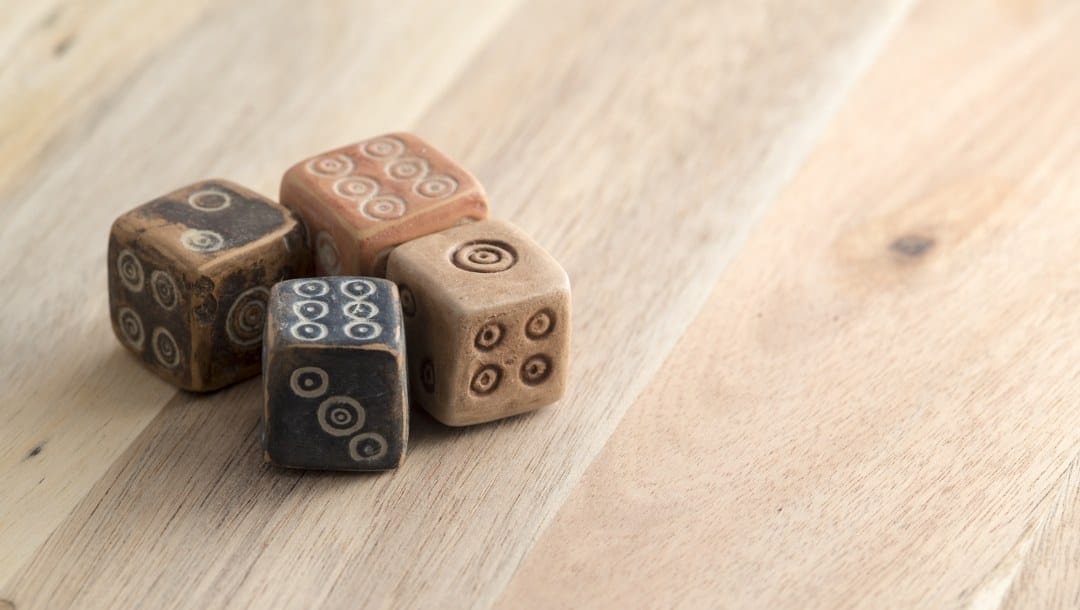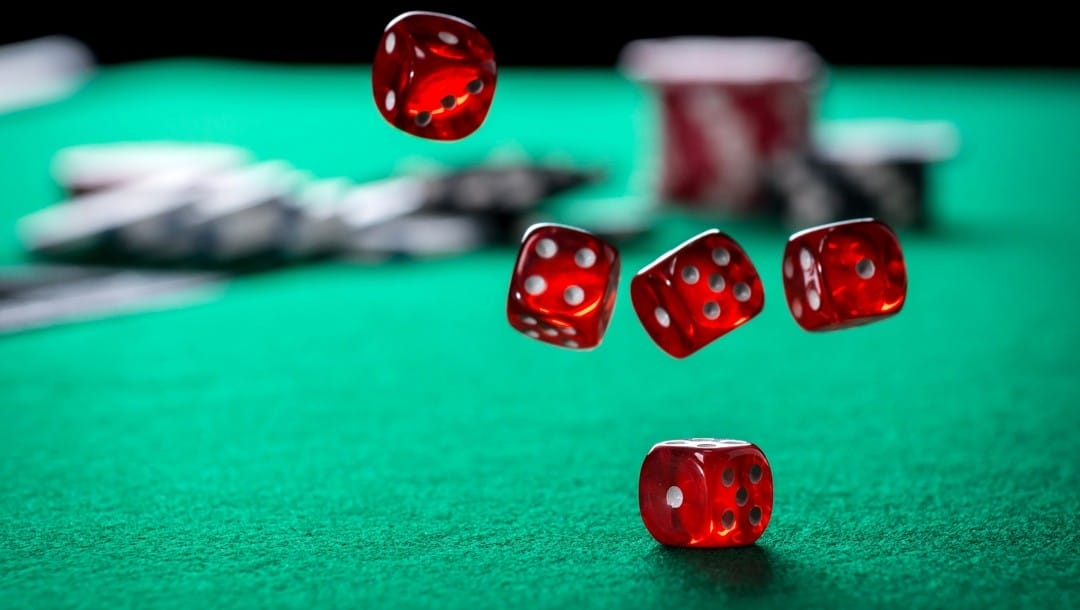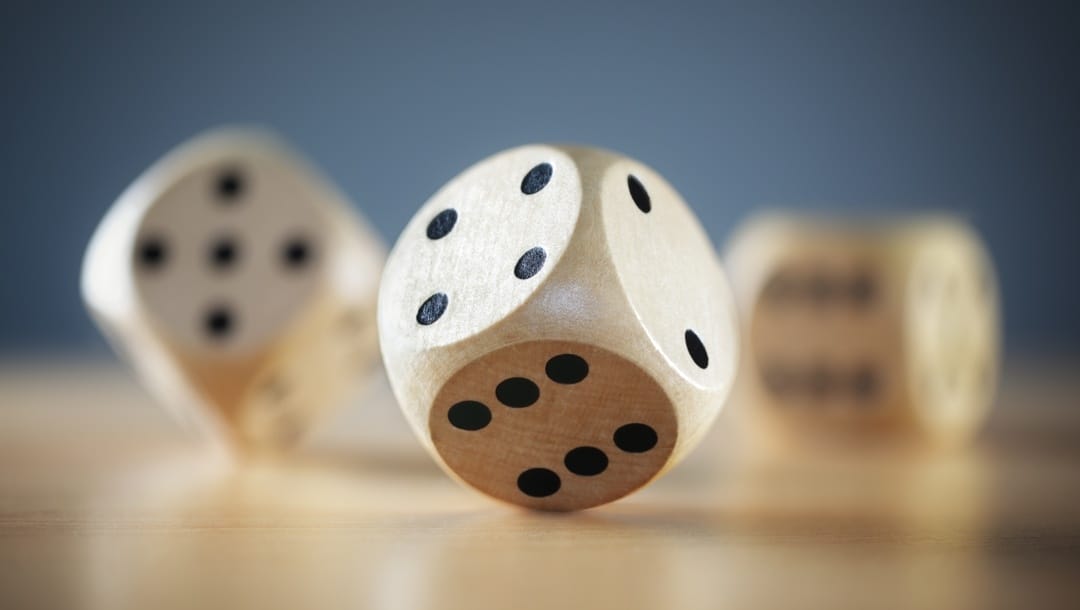All over the world, people use dice to play a wide variety of games. These small, throwable objects have marks on each side, producing a random number whenever they land. At an online casino, the dice may be virtual, but the money you win is very real.
Gamblers have been using dice for much longer than you might realize. Over the years, the materials and manufacturing processes have changed a lot. Discover the surprisingly interesting history of dice and learn how casino dice are different from regular ones.
Dice Throughout History
While online casino table games may be a modern invention, playing games for money certainly isn’t. There’s archaeological and written evidence that people have been gambling for millennia. Historians believe that the earliest versions of dice are the oldest gaming tools known in history. But when were dice invented?
Well, unfortunately, there’s no real answer to that question, although various claims have been made throughout history and across the world. Written records from Ancient Greek and Roman times describe the use of dice. Ancient Indian and Sumerian civilizations also possess historical records talking about games that involve dice.
Archaeologists excavated the oldest known dice from a site in South-Eastern Iran. These artifacts originated between 2800 and 2500 BC. Early dice had four marked faces and were made from animal bones or stones.
However, as cultures continued to invent new games, they developed new dice, too. The first 20-sided die is from 305 BC in Ancient Egypt. Meanwhile, the Romans used two main types of dice. There were “tali,” which were large and four-sided. They also used “tesserae,” which more closely resemble the dice we use today.
Different Dice Materials Over the Years

Ancient societies used animal bones to make the earliest dice, which were likely used for divination. Excavations of archaeological sites show that the talus, part of the ankle of hoofed animals, was saved for this purpose. Each face of the bone featured a unique marking, and people would throw them to predict the future.
Over time, dice were still often made from bone, even when creating them for games. However, records show that various other materials were popular, too, depending on what was available locally. Clay, ivory, wood, metal, and stone were all fashioned into rudimentary dice.
Today, synthetic polymers such as resin or acrylic are used to make dice. These are not only easier to use, but it also means the dice are completely regular and fair to play with.
The Birth of Modern Dice
In Ancient Roman times, gambling was illegal, though dice games were still a very popular pastime for many members of society. The “Tesserae” were small dice with six sides, each numbered from one to six by a pip.
These Roman dice also followed the same numerical system that modern dice use, known as sevens. This means that opposite sides always add up to seven. However, they were often uneven and lopsided, making fair gaming impossible.
While the numbering system of the Tesserae has been retained, modern dice are thankfully designed with precision in mind. The process of standardization began in Europe starting around 1100 AD.
By this time, gamblers had become increasingly frustrated with unfair games. They tried creating new dice designs to combat this problem. Originally, they made dice smaller while also playing around with the numbering system. However, from around 1450 AD, dice had reverted to the sevens system and were slowly developed into a more symmetrical shape to prevent unfair play.
Just like when you bet on roulette, every outcome should be completely random. The perfectly symmetrical shape of the dice made it impossible to cheat the game. Since then, the methods for making dice have become much more advanced and accurate.
How Are Dice Made?
Manufacturing has changed significantly since the Renaissance period. Now, high-powered machines take care of most of the work. This means dice are produced faster than ever before and to a higher standard, too.
Today, dice manufacturing involves a process called plastic injection molding. A machine clamps two molds together before injecting molten acrylic plastic. This type of material is best as it’s thermosetting. This means it turns into a liquid when heated to very high temperatures but produces a hard and durable material when cooled.
The company making the dice also adds pigments to produce different colors and aesthetic effects. The mold creates pips on each die, leaving indents on the surface. Once the material cools, the dice are passed through a tumbler, which polishes them to remove any imperfections on the surface.
After this initial polish, the dice are painted before going through a tumbler once more. This time, the abrasive surface of the tumbler, which works like polishing rocks, will remove any paint except for those used on the pip indents.
The polishing process may take anywhere between 72 and 96 hours, depending on the type of material and the desired effect. The end result is highly polished and professional-looking dice with smooth, rounded edges. These are suitable to use in a variety of exciting casino games with dice. However, most casinos won’t use them until they’ve undergone extra steps.
Casino Dice Manufacturing

Casino dice require more accuracy during the manufacturing process, as regulated operators come under a lot of scrutiny and pressure to provide fair games. Those used for games like craps are called precision dice and have to be made to a very strict tolerance of 1/200th of an inch.
Instead of having indents, a drill is used to create each pip. The manufacturers then fill each hole using paint with the same density as the rest of the die. This way, the center of gravity isn’t affected, and every side has an equal chance of landing face up.
To finish off, an individual serial number prevents cheaters from swapping out precision dice. They’re also highly polished or sanded to be translucent or transparent, ensuring that no one is able to conceal weights within the dice.
Some players still believe that controlling casino dice is possible, where special techniques can be used to manipulate the outcome. However, the way modern dice are created makes this almost impossible.
For online dice games, specialized software generates a random number for each dice throw. This is just as fair, provided a licensed and trusted company produces the game.
More Than Meets the Eye
Dice are much older than many people might expect. Despite this, they haven’t changed much since the Roman times, except for being standardized and becoming easier to play with. Manufacturing dice is a complicated process, but then, crafting any kind of casino equipment requires a high level of precision.
The most modern dice innovation of all, though, has to be online casinos. Register with BetMGM today to experience craps and other games from the comfort of your own home.










